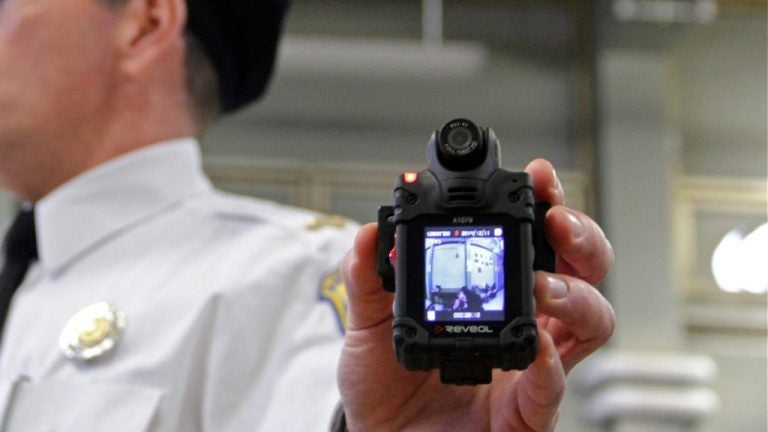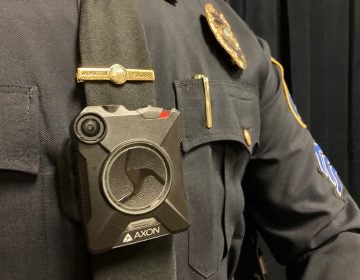Wilmington police chief concerned about cost of getting body cameras
New Castle County patrol officers are using body cameras, but Wilmington and Delaware State police are still thinking it over.
Listen 1:49
Nearly 1,000 Delaware police still do not have body cameras. (Emma Lee/WHYY News)
The fatal police shooting of an unarmed black teenager in Ferguson, Missouri, in 2014 became a flashpoint for nationwide calls to arm officers with body cameras.
Hundreds of departments across the nation now use them. Philadelphia, which is slowly putting them into use, now has issued the cameras to officers in three of 21 precincts.
In Delaware, the three biggest police departments took steps after the Ferguson killing to have their patrol cops use the cameras to record encounters with the public. Yet nearly five years later, only one of those agencies is using body-worn cameras.
That’s New Castle County, whose officers patrol most of northern Delaware. All of their patrol units and some special units now use body cams, spokesman Master Cpl. Michel Eckerd said this week. He did not elaborate or provide the annual cost.
But Wilmington and state police still haven’t done so, even though both departments have researched the issue. Wilmington tested four models in 2017.
Wilmington Chief Robert Tracy, who took office in April 2017 amid the testing, recently told members of City Council that the one holdup is the cost of storing and reviewing the footage for use in court and possible release to the public.
“Some police chiefs are talking about, for every hour of video, it takes two and a half hours for a person to download because of redaction purposes and then also because of privacy issues,’’ Tracy told the City Council’s Public Safety Committee. “So there’s a cost of personnel you have to bring on to do those types of things in law enforcement that, with smaller departments, sometimes that cost can be great.”
Tracy said he’s not necessarily against the cameras, but he wanted the city’s political leaders to know that the toll on police resources and taxpayer dollars would be steep. He did not provide an estimate, saying the one from 2017 was outdated, but promised to give Council members one in the coming weeks.
“I just wanted to put it out there. It’s not so much that we will be against this, that we don’t want that equipment,’’ Tracy said. “It’s just where can it fit into our budget, and are we willing to pay for these types of things?”
Wilmington Council members on board
Councilman Ciro Adams told Tracy and other police leaders that the city can pay the costs to run a system through the capital budget. Council President Hanifa Shabazz said the city finds ways to pay for other policing initiatives and that it could find a way to absorb the cost.
“An ounce of prevention is worth a pound of cure, so if there ever was such an incident that we needed to have visuals, then we will be prepared,’’ Shabazz said. “I think it would demonstrate to the city that they can trust the actions of our police departments, and we’re willing to put our actions on film through our cameras.”
But Harlan Yu, executive director of Upturn, a nonprofit that studies the intersection between civil rights and technology, isn’t bullish on the technology as a panacea for residents or better relations between police and the community.
“Looking at the evolution nationally since Ferguson, I think there’s reasons to be skeptical of the efficacy of body-worn cameras, especially given their cost,” he said.
Yu cited a 2017 Washington, D.C. study that found the cameras didn’t reduce the use of force and citizen complaints or change police behavior.
“Why should taxpayers pay millions of dollars for these surveillance devices that aren’t necessarily pointed at police officers and capturing what they are doing, but are pointed outward at community members and gathering evidence to further a law enforcement purpose?’’ Yu said.
“These cameras aren’t cheap. The really expensive part of body-worn camera systems are the ongoing storage cost of maintaining terabytes of footage for potentially long amounts of time.”
WHYY is your source for fact-based, in-depth journalism and information. As a nonprofit organization, we rely on financial support from readers like you. Please give today.





